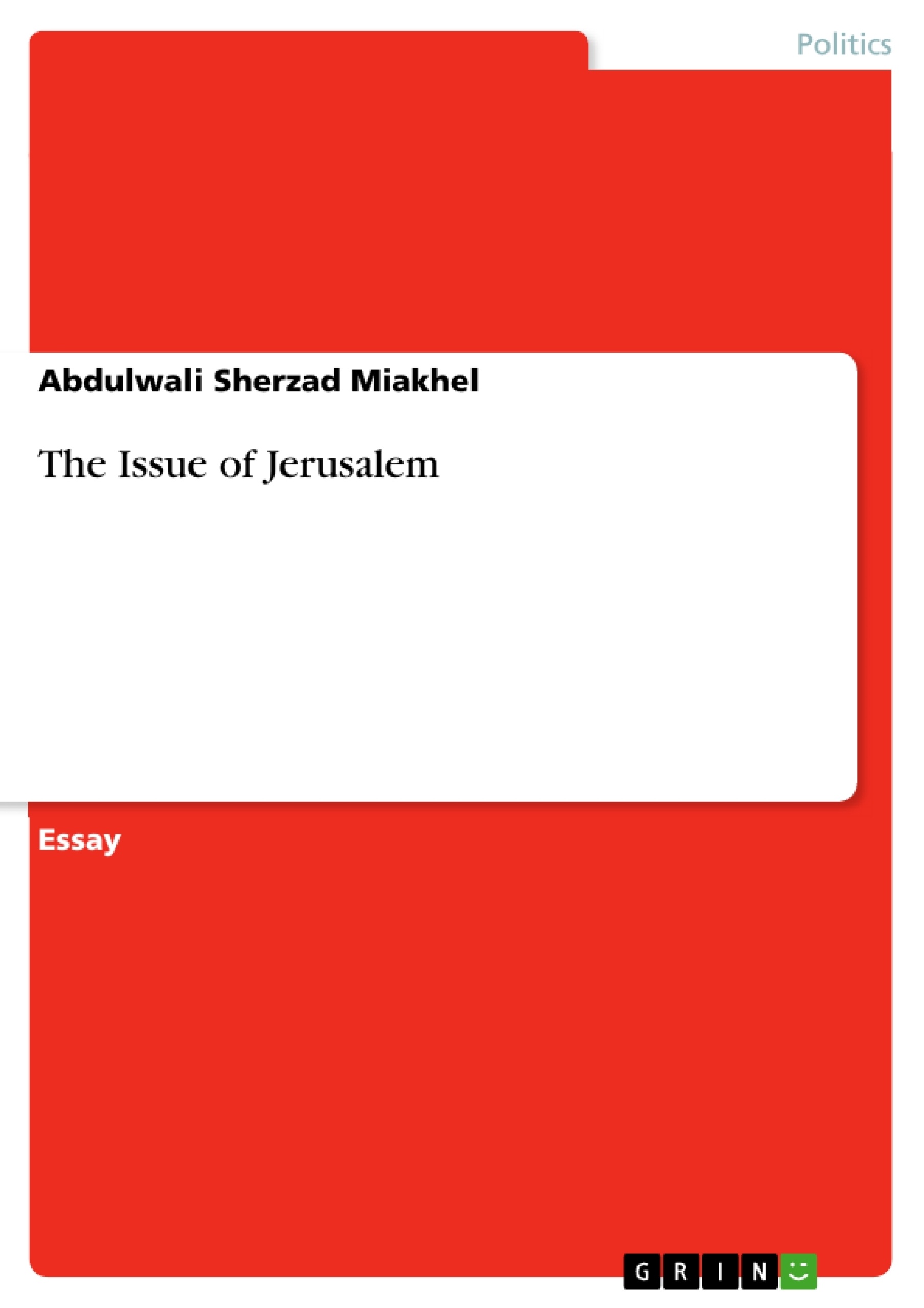The status of Jerusalem is the main and most sensitive part of the Israeli-Palestine conflict. It is sensitive because of its religious importance for all three sides, especially for Muslim and Jewish communities. The international community and even close allies of Israel, the United States, refuse to recognize Jerusalem as the capital of Israel. A majority of countries, including the United States and most European countries, refuse to locate their embassies in Jerusalem.
Inhaltsverzeichnis (Table of Contents)
- Introduction
- Demographic of Jerusalem
- Jerusalem under Muslim
- Jerusalem after Jewish migration
- Status of the Jerusalem
- Plans for the future of Jerusalem
- The dividing of Jerusalem into a dual capital for a comprehensive two-state solution
- The establishment of an interfaith committee: “Parliament of Jerusalem”
- Jerusalem Fund
Zielsetzung und Themenschwerpunkte (Objectives and Key Themes)
This work aims to provide a comprehensive overview of the complex history and current status of Jerusalem, highlighting its significance as a holy city for three major religions and exploring the ongoing conflict surrounding its ownership and governance.- The historical and religious significance of Jerusalem for Islam, Judaism, and Christianity
- The changing demographics of Jerusalem, particularly the impact of Jewish immigration
- The role of international actors, including the United States and the United Nations, in shaping the future of Jerusalem
- The challenges of finding a peaceful and equitable solution to the conflict over Jerusalem
- The potential for a two-state solution and the establishment of an interfaith committee to promote peace and understanding.
Zusammenfassung der Kapitel (Chapter Summaries)
- Introduction: This chapter introduces the complex nature of the Palestinian-Israeli conflict and highlights the central role of Jerusalem as a holy city for Islam, Judaism, and Christianity. It explores the historical context of the conflict and the varying perspectives of each religious community.
- Demographic of Jerusalem: This chapter examines the demographic shifts in Jerusalem, focusing on the impact of Jewish immigration and the changing power dynamics within the city. It also explores the historical interactions between Muslim and Jewish communities, highlighting periods of cooperation and conflict.
- Jerusalem under Muslim: This chapter analyzes the period of Muslim rule in Jerusalem, examining the role of various rulers and empires, particularly the Ottoman Empire. It explores the religious tolerance and economic policies implemented during this time, as well as the impact of the Muslim community on the city's cultural and religious landscape.
- Jerusalem after Jewish migration: This chapter focuses on the influx of Jewish immigrants into Jerusalem in the 19th and 20th centuries. It examines the motivations behind this migration, including religious revivalism, Zionist aspirations, and European colonial influence. It also explores the impact of this migration on the city's demographics and the growing tensions between the Jewish and Arab communities.
- Status of the Jerusalem: This chapter delves into the contemporary status of Jerusalem, examining the competing claims of Israel and Palestine. It highlights the role of international actors, particularly the United States and the United Nations, in shaping the city's future. It explores the challenges of finding a peaceful and equitable solution that respects the rights and interests of all stakeholders.
- Plans for the future of Jerusalem: This chapter explores various proposals for resolving the conflict over Jerusalem, including the potential for a two-state solution and the establishment of an interfaith committee. It examines the feasibility and challenges associated with these proposals, and discusses the potential for peace and reconciliation in the city.
Schlüsselwörter (Keywords)
The primary focus of this work is on the complex history and present-day challenges of Jerusalem, a city of immense religious significance for Islam, Judaism, and Christianity. The text explores the demographic shifts, political dynamics, and international interventions that have shaped the city's past and continue to influence its future. Key terms include Jerusalem, holy city, Palestinian-Israeli conflict, two-state solution, interfaith committee, demographics, immigration, religious tolerance, and international relations.
Excerpt out of 12 pages
- scroll top
- Quote paper
- Abdulwali Sherzad Miakhel (Author), 2008, The Issue of Jerusalem, Munich, GRIN Verlag, https://www.grin.com/document/135269
Look inside the ebook



